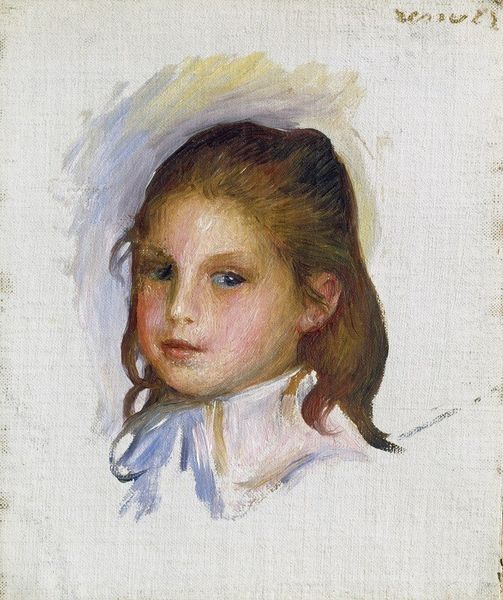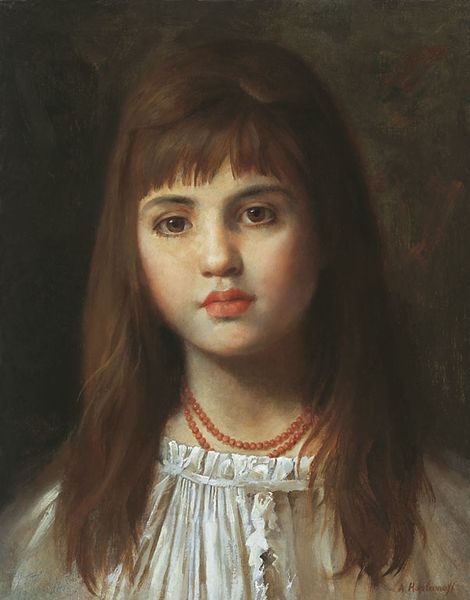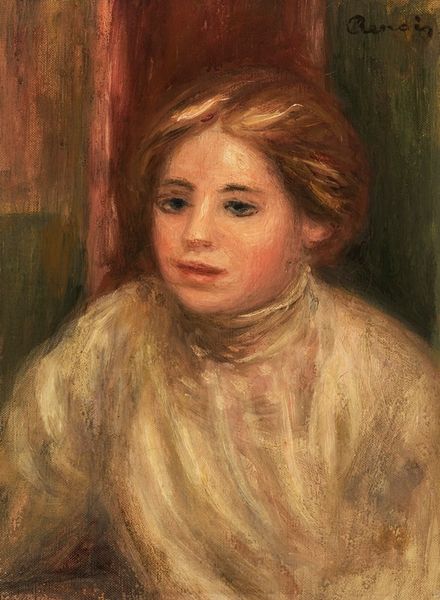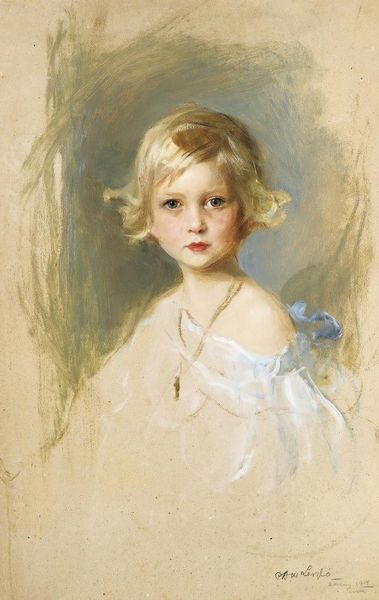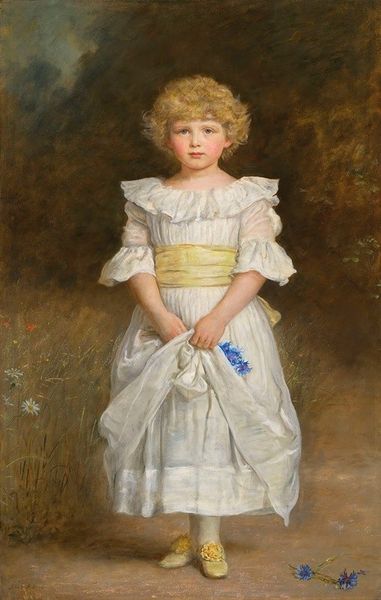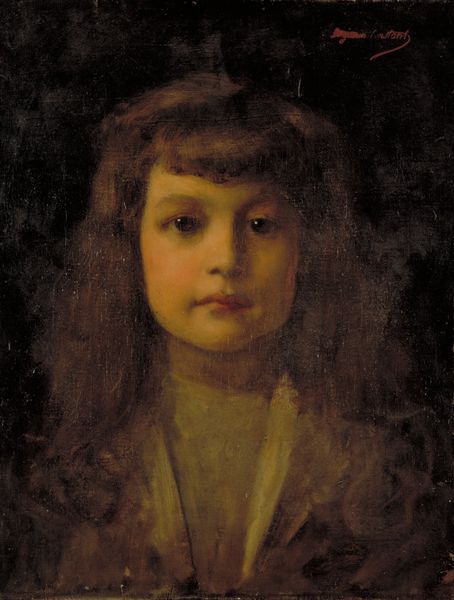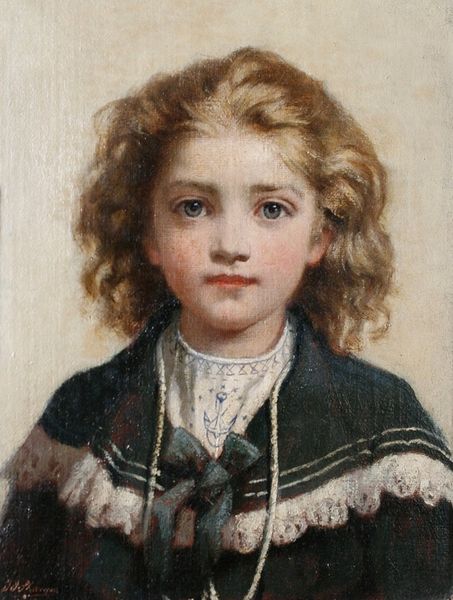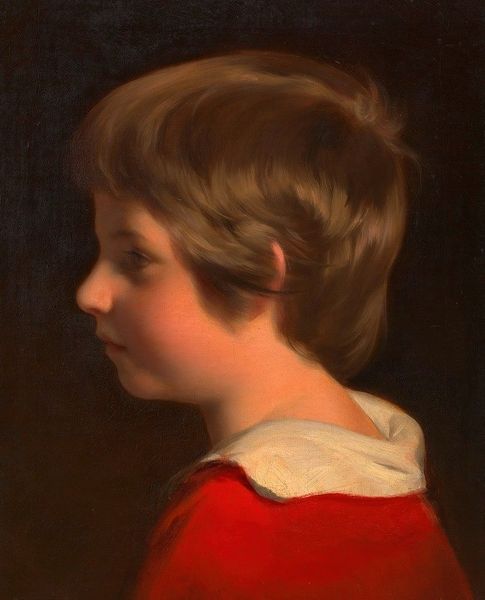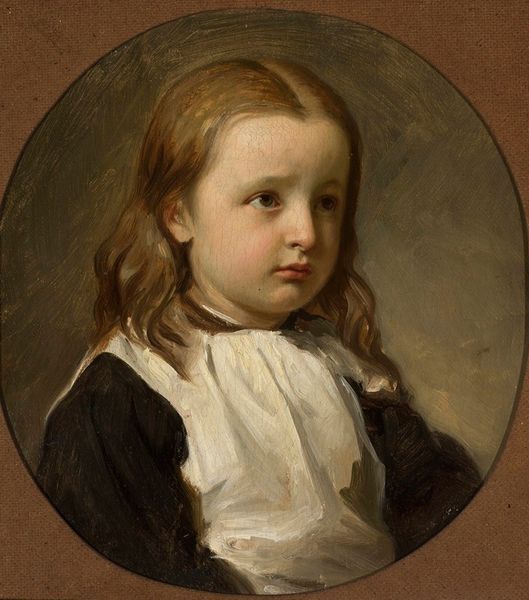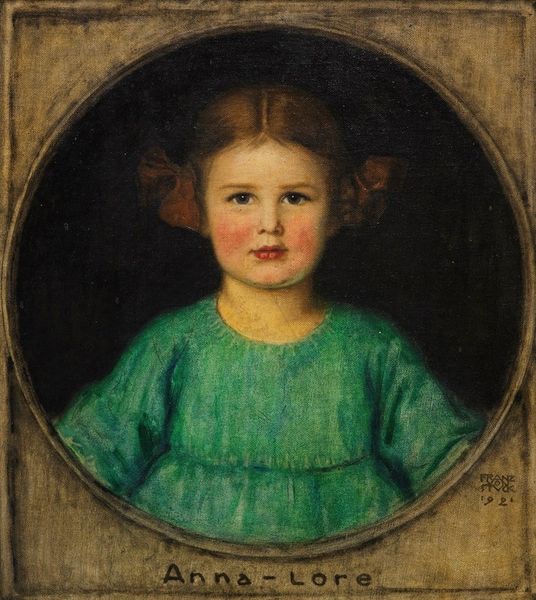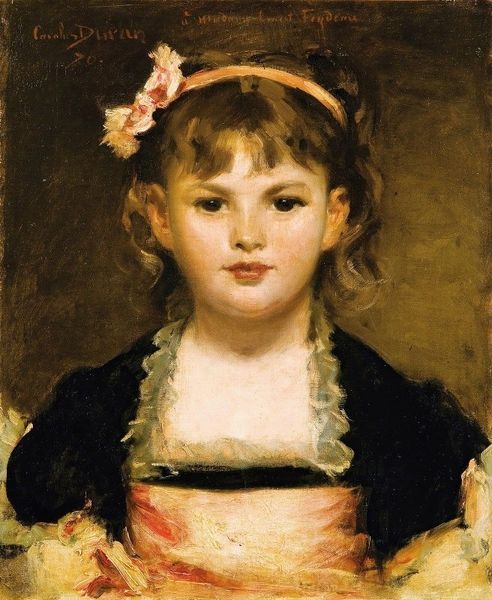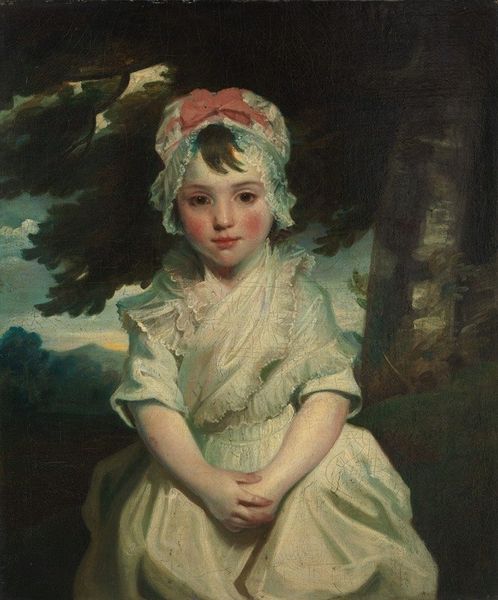
painting, oil-paint
#
portrait
#
painting
#
impressionism
#
oil-paint
#
oil painting
#
academic-art
#
realism
Copyright: Public domain
Curator: Here we have Károly Lotz's "Little Girl," painted in 1885. It’s an oil portrait. Editor: My first impression is…contained. There's a formality that feels almost stiff, despite the soft brushstrokes. It's not just the high collar of her dress, but her expression—it's like she is consciously presenting herself in a certain way. Curator: Absolutely. And the question is, what does it say? Lotz was an academic painter. Look closely, and you can see this almost Impressionistic style. It’s as though the subject has weight, yet could at any moment disappear like a figure of smoke. It seems fitting for a study on the ephemeral subject of girlhood. Editor: Interesting how the texture contributes. Notice the way the paint seems layered, thick in places, especially in the ruffles of her blouse. Someone painstakingly labored to make her a proper middle class girl in a respectable garment. Look at those edges! All that dense, clotted paint must've been difficult to manage, and probably time-consuming and expensive to buy. It definitely plays into that feeling of something contained, built up layer by layer. Curator: It really is, a tension in the execution that mirrors the girl's own tension. Lotz had a distinct way of portraying women - of various ages - within society. Consider the green hue behind the oval vignette...what’s so “painterly” about that, exactly? And yet, it serves an overall sense of the mystery of “femininity.” Editor: Well, if you consider the larger economy around image-making in that era, paintings like these reinforced a specific vision, usually middle class, of youth and beauty and innocence. Consider the industry needed to support its making! All this "painterliness" involved exploitation of pigment mining and processing that came at a huge social and environmental cost, even back then! The final painting ends up idealizing a child of relative privilege whose image becomes a symbol. Curator: Yes, and even if subconsciously, we recognize all this and the portrait lingers, it makes you wonder about that specific girl, what the occasion of her portrayal represents, and ultimately, the way she comes to embody certain social codes for her time. It's the magic, the eternal mystery, of looking into another's past and imagining a life that both echoes and contrasts our own. Editor: Well put. Makes me think differently now. I see less the girl herself and more a dense construction of material and symbolic meanings of womanhood. It makes for a much darker image, ultimately.
Comments
No comments
Be the first to comment and join the conversation on the ultimate creative platform.
